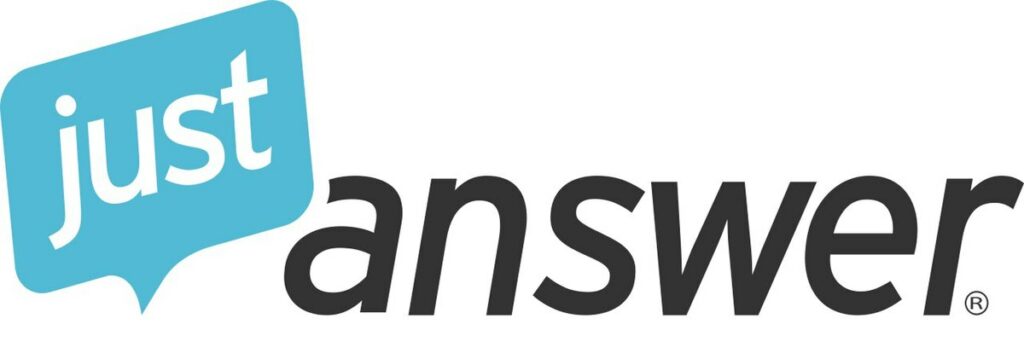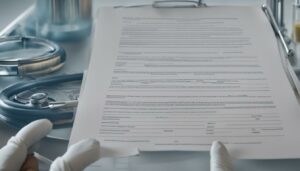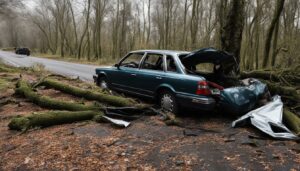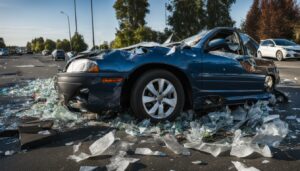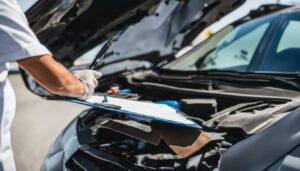Slip and Fall Law Basics: Everything You Need to Know
Have you ever slipped or tripped and fallen while walking down a sidewalk, browsing in a store, or simply going about your day? Unfortunately, slip and fall accidents are a common occurrence, and they can happen to anyone, anywhere. Not only can these accidents be embarrassing, but they can also lead to serious injuries that can impact your physical, emotional, and financial well-being.
Whether it’s a wet floor, uneven pavement, or debris on the ground, slip and fall accidents can be caused by a variety of hazards that can result in severe harm. If you or a loved one have experienced a slip and fall accident, it’s important to understand your legal rights and options for seeking compensation. In this blog post, we’ll explore the basics of slip and fall injury law, and how it can help you recover from the damages caused by such accidents. So, let’s get started!
What is a Slip and Fall Accident?
A slip and fall accident is a type of personal injury incident that occurs when a person slips, trips, or falls on someone else’s property, such as a public space, private residence, or commercial establishment. These accidents can be caused by a wide range of hazards, including wet or slippery surfaces, uneven or damaged flooring, poor lighting, cluttered walkways, and other dangerous conditions.
Slip and fall accidents can result in serious injuries, including broken bones, head trauma, and spinal cord injuries, which can have long-lasting effects on a person’s physical, emotional, and financial well-being. Understanding the basics of slip and fall accidents is crucial for anyone who has been injured in such an incident or who wants to prevent them from happening in the future.
Understanding Slip and Fall Accidents
Slip and fall accidents can occur in a variety of settings, from public places like shopping malls and sidewalks to private properties such as homes and workplaces. Understanding the common causes of these accidents is essential to prevent them and to hold responsible parties accountable when they occur.
Common Causes of Slip and Fall Accidents
Wet or Slippery Surfaces: One of the most common causes of slip and fall accidents is encountering wet or slippery surfaces. This can be caused by spills that have not been cleaned up promptly, freshly mopped floors without proper warning signs, or icy and snowy conditions outdoors. These hazards can make it difficult to maintain balance and increase the risk of falls.
Uneven Flooring or Pavement: Uneven flooring or pavement can create tripping hazards, leading to slip and fall accidents. Cracked sidewalks, potholes, loose tiles, or uneven thresholds can catch people off guard and cause them to lose their balance, resulting in falls and potential injuries.
Poorly Maintained Premises: Negligent property maintenance can contribute to slip and fall accidents. Examples include broken handrails, loose carpeting or floorboards, inadequate lighting, cluttered walkways, or obstructed pathways. These hazardous conditions increase the likelihood of accidents and injuries.
Inadequate Lighting: Insufficient lighting in staircases, hallways, parking lots, or other areas can hinder visibility and make it challenging to identify potential hazards. Dimly lit areas can conceal dangerous conditions, increasing the risk of slip and fall accidents.
Statistics on Slip and Fall Accidents in the US
Slip and fall accidents are a significant concern in the United States. According to the Centers for Disease Control and Prevention (CDC), falls are the leading cause of non-fatal injuries and hospital admissions for trauma among adults aged 65 and older. Additionally, the National Safety Council reports that slip and fall accidents are the third leading cause of unintentional injury-related deaths across all age groups.
The consequences of slip and fall accidents can be severe. They can result in fractures, sprains, head injuries, spinal cord injuries, and even fatalities. The medical costs associated with treating these injuries can be substantial, and the impact on the victims’ quality of life can be significant.
Types of Injuries Resulting from Slip and Fall Accidents
Slip and fall accidents can cause various types of injuries, ranging from minor bruises to life-altering conditions. Common injuries resulting from these accidents include:
Broken Bones and Fractures: When a person falls, they may instinctively try to break their fall with their hands or arms, leading to fractures in the wrists, arms, or shoulders. Falls can also result in hip fractures, which are particularly common among the elderly.
Head Injuries and Concussions: A slip and fall accident can cause a person’s head to strike the ground or another object with force. This impact can lead to traumatic brain injuries, concussions, or other head injuries. These injuries can have long-term consequences, including cognitive impairments, memory loss, and changes in behavior.
Soft Tissue Injuries: Soft tissue injuries, such as sprains, strains, and contusions, are common in slip and fall accidents. Twisting or landing awkwardly during a fall can damage ligaments, tendons, and muscles, causing pain, swelling, and limited mobility.
Psychological Impact: Slip and fall accidents can also have a psychological impact on the victims. Fear of falling again, anxiety, and post-traumatic stress disorder (PTSD) can develop after experiencing a traumatic fall. These psychological effects can significantly impact a person’s daily life and well-being.
Understanding the causes and potential injuries resulting from slip and fall accidents is crucial for both prevention and legal recourse. By being aware of the risks and your rights, you can take appropriate action to protect yourself and seek compensation if necessary.
Liability in Slip and Fall Cases
When it comes to slip and fall accidents, determining liability is crucial in seeking compensation for your injuries. Understanding the concept of premises liability and the duty of care that property owners or occupiers owe to visitors is essential in establishing negligence and holding the responsible parties accountable.
Understanding Premises Liability
Premises liability refers to the legal responsibility of property owners or occupiers to maintain safe conditions on their premises. The duty of care owed to visitors varies depending on their legal status, which is typically classified into three categories:
Invitees: These are individuals who are invited onto the property for business purposes, such as customers in a store or clients in an office. Property owners or occupiers owe them the highest duty of care, which includes regularly inspecting and maintaining the premises and warning of any potential hazards.
Licensees: Licensees are individuals who have permission to enter the property but for non-business purposes. This category includes social guests or friends visiting your home. Property owners or occupiers still have a duty to maintain safe conditions and warn of any known hazards but to a slightly lesser extent compared to invitees.
Trespassers: Trespassers are individuals who enter the property without permission. Property owners or occupiers generally owe a minimal duty of care to trespassers, but they must not intentionally expose them to severe harm.
Proving Negligence in Slip and Fall Cases
To successfully pursue a slip and fall lawsuit, you need to establish negligence on the part of the property owner or occupier. To do so, you must demonstrate the following elements:
Duty of Care: Show that the property owner or occupier had a duty of care towards you as a visitor based on your legal status.
Breach of Duty: Prove that the property owner or occupier breached their duty of care by failing to maintain safe conditions or by not addressing known hazards.
Causation: Establish a causal link between the hazardous condition and your slip and fall accident. You must show that the dangerous condition directly caused your injuries.
Damages: Provide evidence of the damages you suffered as a result of the slip and fall accident, such as medical bills, lost wages, or pain and suffering.
Comparative Negligence and its Impact
In some slip and fall cases, the injured party may bear some degree of responsibility for the accident. Comparative negligence laws come into play to determine the degree of fault assigned to each party involved. There are two main types of comparative negligence:
Contributory Negligence: In states that apply contributory negligence, if the injured party is found to have contributed even slightly to the accident, they may be barred from recovering any compensation.
Comparative Negligence: Most states follow a comparative negligence system, which allows injured parties to recover compensation even if they are partially at fault for the accident. The amount of compensation is reduced based on the degree of their fault.
Vicarious Liability and Third-Party Responsibility
In some slip and fall cases, the property owner or occupier may not be the only party responsible for the accident. Employers, contractors, or subcontractors who are working on the premises may also bear liability for the hazardous conditions that led to the slip and fall. This concept is known as vicarious liability and ensures that multiple parties can be held accountable for their negligence in maintaining a safe environment.
Understanding the concept of premises liability, proving negligence, and considering comparative negligence and vicarious liability is crucial for building a strong slip and fall case. By seeking legal representation and gathering the necessary evidence, you can navigate the legal process with confidence and pursue the compensation you deserve.
Steps to Take After a Slip and Fall Accident
After experiencing a slip and fall accident, it’s crucial to take immediate action to protect your rights and strengthen your potential case for compensation. By following these essential steps, you can ensure your well-being, gather crucial evidence, and seek the necessary legal advice.
Seeking Immediate Medical Attention
The first and most important step after a slip and fall accident is to prioritize your health and well-being. Even if you believe your injuries are minor, it’s essential to seek immediate medical attention. Some injuries, such as internal bleeding or head trauma, may not be immediately apparent but can have serious consequences if left untreated. By seeking medical care, you not only ensure your health but also create a documented record of your injuries, which can be vital for your case.
Reporting the Incident
It’s crucial to report the slip and fall incident to the appropriate parties as soon as possible. If the accident occurred in a public place, such as a store or restaurant, notify the property owner, manager, or supervisor immediately. They may ask you to fill out an incident report, which documents the details of the accident. Be sure to provide accurate and thorough information about what happened and any hazardous conditions that contributed to the fall.
For slip and falls that occur on private properties, such as residential homes or workplaces, inform the property owner or occupier about the incident. Request that they document the accident and provide you with a copy for your records. Reporting the incident promptly helps establish the timeline and ensures that the responsible parties are aware of the incident.
Collecting Evidence and Documentation
Gathering evidence and documentation is crucial for building a strong case and proving liability. Take the following steps to ensure you have the necessary evidence to support your claim:
Photograph the Scene: Use your phone or camera to take photographs of the accident scene, focusing on any hazardous conditions that caused your fall. Capture images of the exact location, the surrounding area, and any visible defects or obstacles.
Document Hazardous Conditions: Make detailed notes about the hazardous conditions that contributed to your slip and fall. Describe the nature of the hazard, whether it was a wet floor, uneven surface, or any other dangerous element. Note the lighting conditions, signage, or lack thereof, and any other relevant details.
Gather Witness Statements: If there were any witnesses to the accident, obtain their contact information and ask for their statements regarding what they observed. Witness testimonies can provide valuable support for your version of events and help establish negligence on the part of the property owner or occupier.
Preserve Physical Evidence: If there are any physical objects or substances that caused your fall, such as a broken handrail or spilled liquid, try to preserve them as evidence. Take photographs and, if possible, collect samples or secure the area to prevent the removal or alteration of the evidence.
Consulting with a Personal Injury Attorney
After taking the initial steps to prioritize your health and gather evidence, it’s essential to consult with a personal injury attorney who specializes in slip and fall cases. An experienced attorney can evaluate the strength of your case, provide expert guidance, and navigate the legal process on your behalf.
During your consultation, be prepared to provide all the details of the accident, including your injuries, the location, and the circumstances surrounding the incident. The attorney will assess the viability of your case, inform you of your legal rights, and guide you through the next steps, including insurance claims, settlement negotiations, or litigation if necessary.
By consulting with a knowledgeable attorney, you can ensure that your rights are protected, that you have a clear understanding of the legal process, and that you have the best chance of obtaining fair compensation for your injuries and losses.
Compensation and Legal Proceedings
When pursuing a slip and fall case, seeking compensation for your injuries and losses is a crucial aspect of the legal process. Understanding the types of compensation available and navigating the various stages of legal proceedings can help you pursue a fair resolution.
Types of Compensation Available in Slip and Fall Cases
In slip and fall cases, several types of compensation may be available to compensate for the damages you have suffered. These can include:
Medical Expenses: Slip and fall accidents often result in significant medical expenses, including emergency room visits, hospital stays, surgical procedures, diagnostic tests, medications, physical therapy, and rehabilitation. Compensation can help cover these costs, both current and future.
Lost Wages and Diminished Earning Capacity: If your slip and fall injuries prevent you from working, you may be entitled to compensation for lost wages. This includes both the income you have already lost due to missed work and any future income you may be unable to earn due to your injuries or disabilities.
Pain and Suffering: Slip and fall accidents can cause physical pain, emotional distress, and a diminished quality of life. Compensation for pain and suffering seeks to address these intangible losses and the overall impact the accident has had on your well-being.
Determining the appropriate amount of compensation for each category requires a careful assessment of the specific circumstances of your case, including the severity of your injuries, the impact on your life, and any long-term effects.
Settlement Negotiations and Alternative Dispute Resolution
In slip and fall cases, parties involved often aim to reach a settlement agreement before proceeding to trial. Settlement negotiations involve discussions between your attorney, the opposing party, and their insurance representatives. The goal is to reach a mutually acceptable resolution without the need for a lengthy court battle.
During settlement negotiations, your attorney will present your case, including the evidence gathered and the damages you have suffered. The opposing party may counter with their own evaluation of the case. Negotiations can involve back-and-forth discussions, offers, and counteroffers until an agreement is reached.
In some cases, alternative dispute resolution methods such as mediation or arbitration may be utilized. These processes involve a neutral third party who helps facilitate negotiations and guide the parties towards a resolution. Mediation and arbitration can often provide a more efficient and cost-effective means of resolving disputes compared to going to trial.
Litigation Process and Trial Proceedings
If a settlement cannot be reached, or if the opposing party refuses to offer a fair settlement, your case may proceed to trial. The litigation process involves several stages, including:
Pre-Trial Procedures: This stage involves filing the necessary legal documents, including the complaint and the answer, to initiate the lawsuit and establish the legal claims and defenses. Both parties engage in the discovery process, where evidence is exchanged, depositions are taken, and expert witnesses may be consulted.
Trial Timeline: The trial timeline varies depending on the complexity of the case, the court’s schedule, and other factors. It typically involves jury selection, opening statements, witness testimonies, cross-examinations, presentation of evidence, closing arguments, and the judge’s instructions to the jury.
Courtroom Proceedings: During the trial, your attorney will present your case, including witness testimonies, expert opinions, and any other evidence supporting your claim. The opposing party will have the opportunity to challenge your case and present their defense. Ultimately, the jury will determine the outcome, considering the evidence presented and following the judge’s instructions.
Case Examples and Notable Slip and Fall Lawsuits in the US
Throughout history, there have been numerous notable slip and fall lawsuits that have shaped the legal landscape surrounding these types of accidents. Familiarizing yourself with some of these cases can provide valuable insight into the potential outcomes and legal precedents. For example, the McDonald’s hot coffee case in 1994, where a woman was awarded a substantial settlement for injuries suffered from a spilled cup of hot coffee, brought attention to the duty of businesses to provide safe products and warn of potential hazards.
Examining these case examples can help you understand the factors that contribute to successful slip and fall lawsuits and the importance of building a strong case based on negligence, evidence, and applicable laws.
As you navigate the legal journey of seeking compensation for your slip and fall injuries, consulting with an experienced personal injury attorney is essential. They can guide you through settlement negotiations, represent you in court if necessary, and ensure that you have the best chance of obtaining fair compensation for your damages.
.A personal injury lawyer can help you understand your legal options and pursue the compensation you deserve.

Property Owner Responsibility
Property owners have a legal obligation to keep their premises safe for visitors, which includes taking reasonable steps to prevent slip and fall accidents. Property owner responsibility may include:
Regular inspections: Property owners should conduct regular inspections of their premises to identify potential hazards that could cause slip and fall accidents. They should also take prompt action to address any hazards that are identified.
Maintenance: Property owners should maintain their premises in a safe condition, which includes repairing damaged or uneven flooring, fixing broken steps or handrails, and addressing any other hazards that could cause harm to visitors.
Warning signs: Property owners should provide adequate warning signs to alert visitors to potential hazards, such as wet floors, uneven surfaces, or steps.
Training: Property owners should provide appropriate training to their employees and staff to help prevent slip and fall accidents. This may include training on how to identify potential hazards, how to properly clean spills, and how to use warning signs.
If a property owner fails to take reasonable steps to prevent slip and fall accidents and someone is injured as a result, the owner may be held liable for the victim’s injuries and other damages. It is important for property owners to take their responsibility seriously and ensure that their premises are safe for visitors at all times.
Conclusion
Slip and fall accidents can result in serious injuries and legal consequences. If you’ve been injured in a slip and fall accident, it’s important to understand your legal rights and responsibilities.
This guide has covered the basics of slip and fall law, including common causes of accidents, how liability is determined, and what to do if you’ve been injured. By following these guidelines and seeking the assistance of an experienced attorney, you can ensure that your rights are protected and that you receive the compensation you deserve.
This blog post is part of the Legal Framework in the US series. For an entire overview of the legal Framework in the US, please visit our main blog post here.
FAQ’s
FAQ 1: Can I sue for a slip and fall accident? Yes, you can sue for a slip and fall accident if you were injured due to the negligence of the property owner or occupier. However, it is important to prove that the property owner had a duty of care to maintain the property and that their negligence led to your injury.
FAQ 2: What damages can I recover in a slip and fall lawsuit? The damages that you can recover in a slip and fall lawsuit depend on the extent of your injuries and the circumstances of the accident. You may be able to recover damages for medical expenses, lost wages, pain and suffering, and other losses that you have experienced as a result of the accident.
FAQ 3: How long do I have to file a slip and fall lawsuit? The statute of limitations for filing a slip and fall lawsuit varies by state. In some states, you may have as little as one year from the date of the accident to file a lawsuit. It is important to consult with an attorney to determine the time limit in your state.
FAQ 4: What if the property owner claims I was partially at fault for the accident? If the property owner claims that you were partially at fault for the accident, it may affect your ability to recover damages. However, if the property owner was also negligent in maintaining the property, you may still be able to recover damages. It is important to consult with an attorney to assess your case.
FAQ 5: Can I file a slip and fall lawsuit if I was injured on someone else’s property? Yes, you can file a slip and fall lawsuit if you were injured on someone else’s property, as long as the property owner had a duty of care to maintain the property and their negligence led to your injury. It is important to consult with an attorney to assess your case and determine your legal options.
Further Reading:
